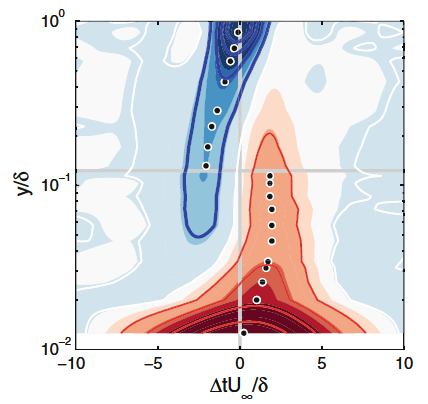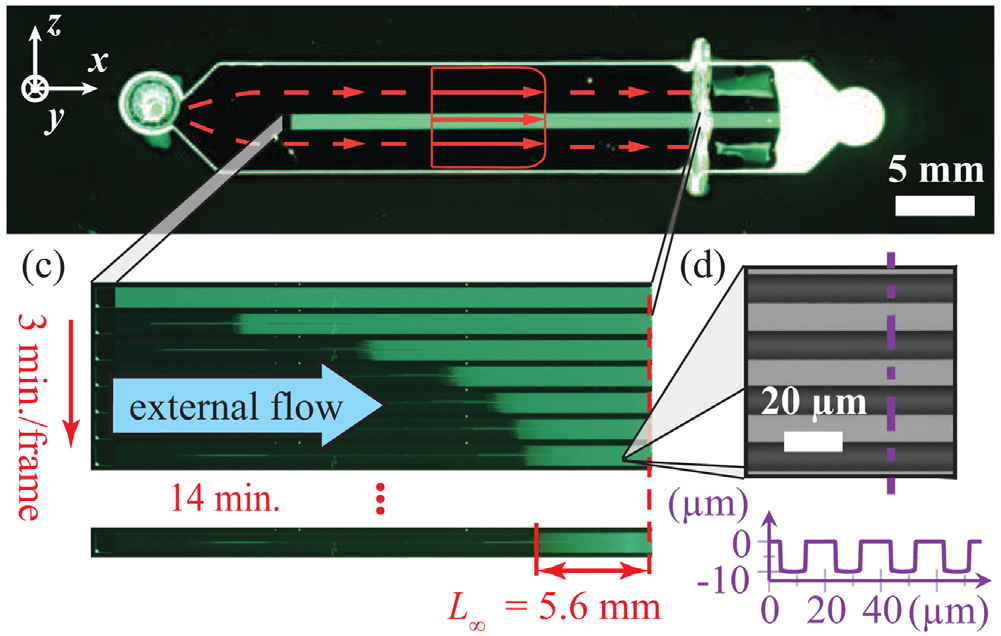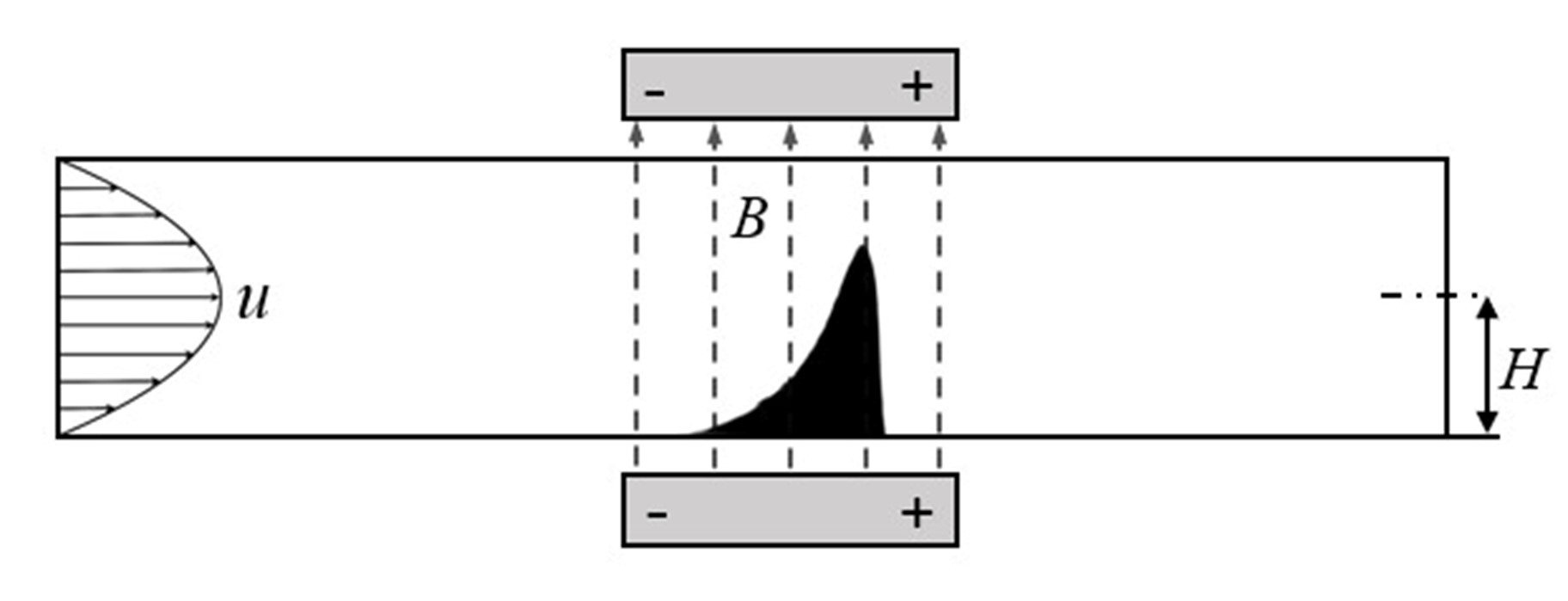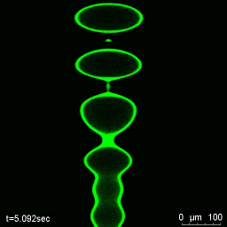Bubble Release
Underwater release of a finite volume of air is studied experimentally. We use high-speed measurements to characterize the dynamics of the release, and in effort to determine the role of the numerous physical phenomena that take place in the process. Additionally, the system is modelled numerically in order to achieve the capabilities of predicting the dynamics of an arbitrary release. Such release can occur at the event of leakage from any finite compartment of non-watery fluid underwater, as well as the ballast action exhibited by submarines and submarine fauna.
--- Actively Recruiting ! ---

Neural Networks and Turbulent Coherent Structures
We are working to interrogate and modify the unsteady interactions between large- and small-scale turbulent structures around a bluff body using distributed actuation driven by reinforcement learning. We will be using a distributed array of actuators over the surface of a bluff body in an unsteady flow to interrogate the spatial and temporal dimensions of the scale-interaction problem. A cylinder in cross-flow will be embedded with multiple, independent moving-walls that can modify the near-wall flow field, acting as sources of localized wall vorticity, while an oscillating flap upstream of the cylinder will allow for modifying the incoming, unsteady, large-scale motions. Convolutional neural networks will be trained to represent the dynamic scale interaction process, in conjunction with traditional velocity and body-force measurements.
--- Actively Recruiting ! ---

Self-Propelled Particles in Complex Flows
We are working to exploit the self-propelling and self-organizing properties of active particles to enhance the natural, convective mixing of unstable flows. By adding active particles to a mixing layer, we hope to control the evolution and structural organization of the mixing, and thereby increase the mixing efficiency. This project is designed to explore the fundamental interactions between self-organizing active particles and the structure of an unstable convective flow, to determine how the active particles modify the mixing process, and to tune the physico-chemical properties of active particles to enhance convective mixing.
--- Actively Recruiting ! ---

Particle Clusters in Turbulence
The clustering behavior of inertial particles in a turbulent boundary layer was studied experimentally at the scale of the natural large-scale motions of the momentum field. A new, wavelet-based hierarchy detection tool was employed to identify large-scale coherent clusters of particles, instantaneously. Significant particle clustering at scales of two to three times the boundary layer thickness was observed, with a dominant orientation in the streamwise direction. The relations between large scale motions in momentum and particle field were explored by conditional averaging.

Coherent Motions in Turbulence
We are interested in the identification and dynamics of large-scale coherent motions within the turbulent boundary layer and other wall-bounded flows. Large-scale coherent motions contain a significant portion of the energy in most turbulent flows and also interact with smaller scale motions important for the generation of skin friction. By understanding how these structures behave, we can develop new strategies to modify and control their effects, potentially providing new ways to reduce drag or increase maneuverability in air and sea vehicles. We have developed new techniques for measuring the interaction between these large-scale motions and smaller features of turbulent flows and are continuing work in the underlying mechanisms which govern these interactions.

Liquid-Infused Surfaces
Liquid-infused surfaces are a recent extension to traditional, gas-infused superhydrophobic surfaces that offer a wider range of "omniphobic" properties as well as the potential for increased robustness. These properties are dependent on the ability to retain the liquid layer under challenging environmental operating conditions. We have developed a design methodology for constructing porous substrates capable of retaining liquid-infused lubricants in high shear-stress environments and are continuing to refine and extend this work to other environmental conditions.

Magnetic Fluids
The manipulation of ferrofluidic droplets by magnetic fields is a popular technique for controlling fluid transport in open microfluidic systems. We examine the effect of gravity and shear flow external forces on the adhesion properties of sessile ferrofluidic droplets in the presence of a uniform magnetic field. The magnetic field was found to enhance the critical Bond number at which sliding begins on a tilting substrate, but suppress the critical Weber number at which sliding begins in a moderate Reynolds number channel flow. The divergent adhesion trends are explained in terms of the shape deformation induced in the ferrofluidic droplet and the balance of applied forces in each system.

Custom Particles Manufacturing via Microfluidics
Commercial fluorescent tracer particles used for particle image velocimetry (PIV) in fluid mechanics and particle dispersion experiments, are available in a very limited range of densities, and are prohibitively expensive for largescale experiments. Therefore, we extend an earlier microfluidic system of double emulsion droplets generation in a co-flow microcapillary device, using salt-water solution to control droplet density. We built a pressure-driven operation that reduces polydispersity of the droplet’s size, and automated the measuring process by writing an image analysis code, which iterates over thousands of images for every run in the experiment.
